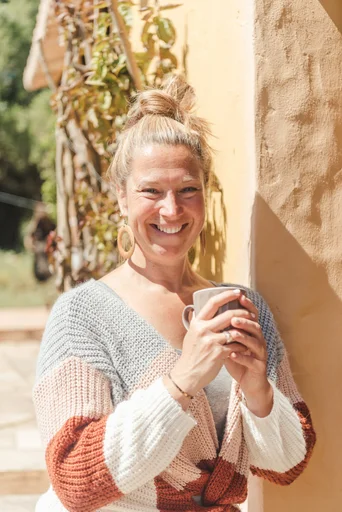Expert Q&A: Poses for Endometriosis

Understanding Endometriosis and Its Impact
Endometriosis is a common yet often misunderstood condition that affects 1 in 10 reproductive-age women and girls globally. It is characterized by the growth of tissue similar to the lining of the uterus outside the uterus, leading to various symptoms and complications. The impact of endometriosis on women's quality of life is significant, with statistically higher rates of chronic pelvic pain and a decreased overall well-being.
What is Endometriosis?
A Brief Overview
Endometriosis can cause debilitating pain during menstruation, sexual intercourse, and bowel movements. Additionally, it may lead to infertility, fatigue, and gastrointestinal issues. The exact cause of endometriosis remains unclear, making it challenging to diagnose and manage effectively.
Symptoms and Diagnosis
Common symptoms include pelvic pain, heavy menstrual bleeding, and infertility. Diagnosing endometriosis typically involves a combination of medical history assessment, pelvic exams, ultrasound imaging, and in some cases, laparoscopic surgery for definitive diagnosis.
Why Yoga Can Help
The Connection Between Yoga and Pain Relief
Studies have shown that the practice of yoga provides relief from lower back pain, menopausal symptoms, stress, and depression. Furthermore, yoga has been found to be beneficial for reducing pain and improving the quality of life in people with endometriosis.
Benefits Beyond Physical Symptoms
In addition to managing physical symptoms such as pain and discomfort, yoga offers several healing benefits that may help reduce endometriosis-related stress. By relieving tension, encouraging relaxation, managing stress effectively through mindfulness practices like yoga can be a powerful tool for women with endometriosis to live more comfortable lives.
Expert Q&A: Best Yoga Poses for Endometriosis

After understanding the impact of endometriosis, it's crucial to explore specific yoga poses that can help manage its symptoms. According to Kasia Gondek, a physical therapist and certified strength and conditioning specialist, yoga helps manage endometriosis in several ways. To alleviate endometriosis pain and discomfort, Gondek advises focusing on restorative poses to release tension and promote relaxation.
Pose 1: Child’s Pose (Balasana)
How to Do It
To perform Child’s Pose, start by kneeling on the floor with your toes touching and knees spread apart. As you exhale, lower your torso between your thighs, extending your arms in front of you or resting them alongside your body. Hold this position for several breaths, allowing your body to relax into the gentle stretch.
Why It Helps
Child’s Pose gently stretches the hips, thighs, and ankles while promoting a sense of calm and relaxation. This pose can help relieve tension in the pelvic area and lower back, providing comfort for individuals with endometriosis.
Pose 2: Supine Twist (Supta Matsyendrasana)
How to Do It
Lie on your back with your arms extended out to the sides. Bend one knee towards your chest and guide it across your body towards the opposite side while keeping both shoulders grounded. Hold this position for a few breaths before repeating on the other side.
Why It Helps
The Supine Twist helps release tension in the spine and lower back while gently massaging the abdominal organs. This can aid in reducing discomfort associated with endometriosis and promote relaxation.
Pose 3: Pelvic Tilt (Pelvic Tilting)
How to Do It
Begin by lying on your back with bent knees and feet flat on the floor. Slowly tilt your pelvis upward, pressing your lower back against the floor while engaging your abdominal muscles. Hold for a few seconds before releasing and repeating as needed.
Why It Helps
Pelvic tilting strengthens the core muscles and promotes flexibility in the lower back, which can be beneficial for individuals experiencing pelvic pain due to endometriosis.
Pose 4: Butterfly Pose (Baddha Konasana)
The Butterfly Pose, also known as Baddha Konasana, is a gentle yoga pose that can provide relief for individuals with endometriosis. This restorative pose helps release tension in the hips and groin area, promoting relaxation and comfort.
How to Do It
Start by sitting on the floor with your legs extended.
Bend your knees and bring the soles of your feet together, allowing your knees to fall out to the sides.
Hold onto your feet or ankles with your hands.
Sit up tall and gently flap your knees up and down, resembling the movement of a butterfly's wings.
Why It Helps
The Butterfly Pose helps open up the hips and stretch the inner thighs, providing relief from tightness and discomfort in the pelvic region. This gentle stretching can alleviate tension associated with endometriosis and promote a sense of ease.
Expert Testimony:
According to Kasia Gondek, a physical therapist and certified strength and conditioning specialist, yoga helps manage endometriosis symptoms by relieving pain, reducing stress, boosting blood circulation, improving flexibility, and enhancing immune function. Research has shown that regular yoga practice can be a powerful tool for women with endometriosis to live more comfortable lives.
How to Incorporate These Poses into Your Routine

Now that you have learned about the beneficial yoga poses for managing endometriosis, it's essential to understand how to incorporate these poses into your routine effectively. Creating a comfortable space and building a routine that suits your needs can significantly enhance the overall experience and benefits of practicing these poses.
Creating a Comfortable Space
Choosing the Right Environment
When practicing yoga to manage endometriosis symptoms, selecting the right environment is crucial. Choose a quiet and peaceful space where you feel relaxed and at ease. This could be a corner in your home, a serene outdoor area, or a dedicated yoga studio. Ensuring that the environment is free from distractions can help you focus on your practice and promote relaxation.
Necessary Equipment
To create a comfortable space for practicing yoga poses, consider investing in some basic equipment. A supportive yoga mat can provide cushioning for your body during floor-based poses, while yoga blocks and bolsters can assist in achieving proper alignment and comfort. Additionally, having a cozy blanket or shawl nearby can offer warmth during relaxation poses such as Child’s Pose and Supine Twist.
Building a Routine
Frequency and Duration
Incorporating yoga poses into your routine should be based on your individual comfort level and schedule. Aim to practice these poses at least 3-4 times per week to experience their full benefits. Start with shorter sessions, gradually increasing the duration as you become more familiar with the poses and their effects on your body.
Listening to Your Body
As you integrate these yoga poses into your routine, it's important to listen to your body's signals and adjust accordingly. If you experience discomfort or pain during any pose, modify it or take a break as needed. Pay attention to how each pose makes you feel physically and emotionally, allowing yourself the flexibility to adapt your routine based on your unique needs.
Expert Testimony:
Experts believe that practicing yoga may affect the stress pathways that cause pain from endometriosis.
According to Kasia Gondek, a physical therapist and certified strength and conditioning specialist, yoga helps manage endometriosis in several ways.
Research suggests that yoga does help to manage endometriosis symptoms.
The practice of endometriosis yoga is recommended for women with endometriosis to reduce levels of pain and stress and improve QoL.
It is important to note that yoga is not a cure for endometriosis, and should part of a multi-prong approach to manage the symptoms.
Expert Tips for Managing Endometriosis Symptoms
Living with endometriosis can be challenging, but there are expert tips and strategies that can help manage its symptoms effectively. From dietary adjustments to stress-relief practices and knowing when to seek professional help, incorporating these tips into your lifestyle can make a significant difference in your overall well-being.
Diet and Nutrition
Foods to Embrace
Making mindful choices about your diet can positively impact the management of endometriosis symptoms. Research suggests that certain foods may help alleviate discomfort and inflammation associated with the condition. Embracing a diet rich in anti-inflammatory foods such as fatty fish (salmon and mackerel), leafy greens (spinach and kale), fruits (berries), nuts (almonds), and seeds (flaxseeds) can contribute to reducing inflammation in the body, potentially easing endometriosis-related pain.
Foods to Avoid
Conversely, there are certain foods that may exacerbate symptoms of endometriosis. Processed foods high in trans fats, refined sugars, and excessive caffeine intake have been linked to increased inflammation and hormonal imbalances, potentially worsening the effects of endometriosis. Limiting the consumption of processed snacks, sugary treats, and caffeinated beverages may help mitigate symptom severity.
Stress Management Techniques
The Role of Stress in Endometriosis
Stress is known to exacerbate various health conditions, including endometriosis. Elevated stress levels can lead to increased pain perception, heightened inflammation, and hormonal disruptions, all of which can negatively impact the experience of living with endometriosis. Understanding the role of stress in exacerbating symptoms is crucial for developing effective management strategies.
Effective Stress-Relief Practices
Incorporating stress-relief practices into your daily routine can significantly improve your quality of life while managing endometriosis. Yoga offers several healing benefits that may help reduce endometriosis symptoms such as stress, tension, and pain. Brazilian researchers found that regular yoga practice was beneficial for reducing pain and improving the quality of life in people with endometriosis. Engaging in mindfulness meditation, deep breathing exercises, or spending time in nature are also effective ways to alleviate stress levels.
When to Seek Professional Help
Recognizing the Signs
It's essential to recognize when your symptoms require professional medical attention beyond self-management strategies. If you experience severe pelvic pain that interferes with daily activities or notice changes in menstrual patterns such as unusually heavy bleeding or irregular cycles, seeking guidance from a healthcare provider is crucial.
Finding the Right Specialist
When seeking professional help for managing endometriosis symptoms, finding a healthcare provider specializing in gynecology or reproductive health is paramount. Look for specialists who have experience in diagnosing and treating endometriosis specifically. They can offer personalized treatment plans tailored to your unique needs while providing ongoing support throughout your journey with this condition.
Final Thoughts
Embracing a Holistic Approach
When it comes to managing endometriosis, taking a holistic approach that encompasses various aspects of well-being is crucial. Experts emphasize the importance of integrating dietary adjustments, stress-relief practices, and physical activities such as yoga into a comprehensive plan for managing endometriosis symptoms.
Scientific Research Findings:
The Mediterranean dietary pattern may improve endometriosis-associated pain symptoms via various mechanisms, such as an anti-inflammatory effect. Fish rich in omega-3 fatty acids and extra virgin olive oils were recommended because of their anti-inflammatory effect.
Reducing dietary fat and increasing dietary fiber have been shown to reduce circulating estrogen concentrations, suggesting a potential benefit for individuals with endometriosis, as it is an estrogen-dependent disease.
The results of studies show a clear tendency toward a relationship between pain relief in endometriosis patients and Mediterranean dietary patterns.
Taking inspiration from these findings, embracing a diet rich in anti-inflammatory foods can potentially alleviate discomfort associated with endometriosis. Incorporating foods such as fatty fish (salmon and mackerel), leafy greens (spinach and kale), fruits (berries), nuts (almonds), and seeds (flaxseeds) can contribute to reducing inflammation in the body, thereby easing endometriosis-related pain.
The Importance of Consistency
Consistency is key when it comes to managing endometriosis symptoms. Establishing a routine that includes regular yoga practice, mindful eating habits, and stress-relief techniques can significantly impact the overall well-being of individuals living with this condition. By consistently incorporating these practices into daily life, individuals can experience gradual improvements in symptom management and quality of life.
Being Patient with Yourself
Living with endometriosis can be challenging, both physically and emotionally. It's essential to be patient with yourself as you navigate the journey of managing this condition. Recognize that progress takes time, and each small step towards better symptom management is significant. Practicing self-compassion and seeking support from healthcare professionals or support groups can provide valuable encouragement along the way.
Additional Resources
Seeking additional resources beyond individual efforts is beneficial for gaining further knowledge and finding support within the community.
Books and Websites
Exploring reputable books and websites dedicated to endometriosis awareness can offer valuable insights into symptom management strategies, lifestyle adjustments, and emotional support. Some recommended resources include "The Endometriosis Health & Diet Program" by Andrew S. Cook MD FACOG (Author) & Danielle Cook MS RD CDE (Author) and "EndoFound.org," which provides comprehensive information on endometriosis research, advocacy efforts, and community support.
Support Groups and Communities
Engaging with support groups or online communities focused on endometriosis allows individuals to connect with others who understand their experiences. These platforms provide opportunities to share personal stories, seek advice from peers facing similar challenges, and access emotional support during difficult times.
See Also
Consulting the Specialist: Enhancing Pain Endurance through Yoga | Yoga Journal
Inquiry & Answer: Suggestions for Yoga Poses for Novices
Challenging Inquiries Resolved: Yoga Leaders Discussing White Male Privilege
Antenatal Yoga: 5 Yoga Poses to Release Psoas and Alleviate Lower Back Pain
Pearls of Wisdom from Yoga Journal LIVE! San Francisco Speakers
We bring back the importance of initiation into womanhood by Roos-Veerle Krijnen & Ella-June Henrard
Welcome to the Women’s Initiation Retreat by Naked Truth Retreats, a transformative journey into the depths of your True Feminine Nature. This retreat, scheduled from 17th to 24th August 2024 in Portugal, invites you to remember the sacredness and wholeness of your being.
Roos-Veerle Krijnen & Ella-June Henrard



